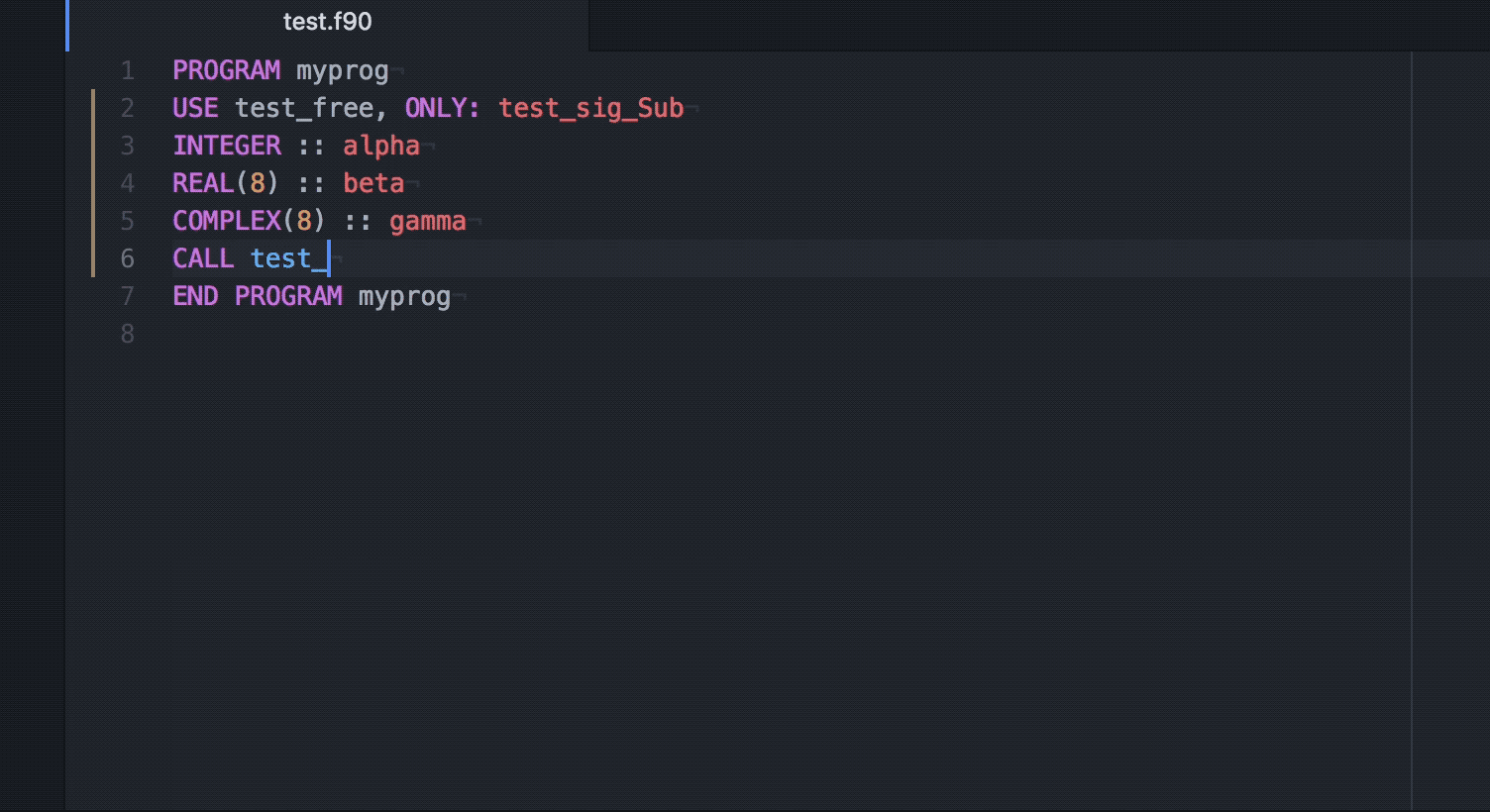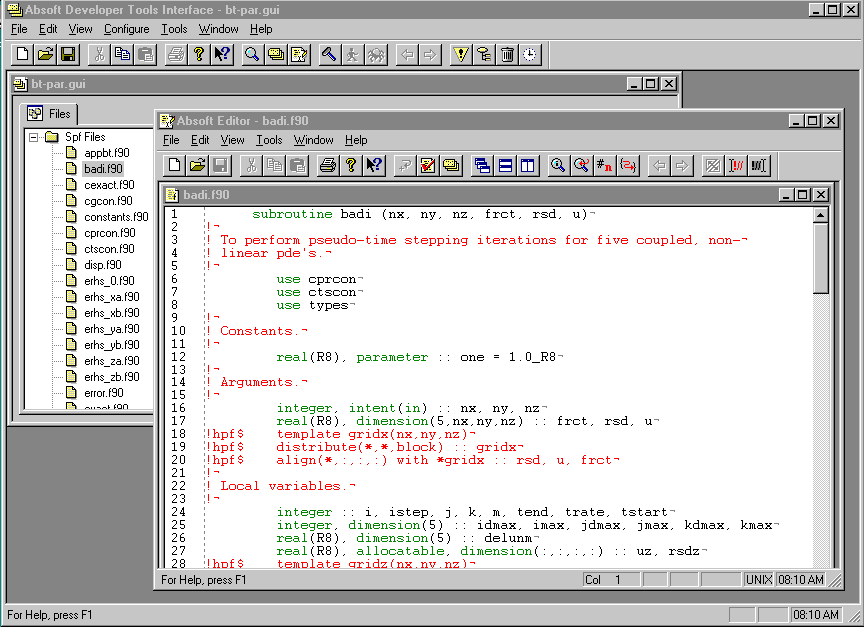Fortran: The Language That Revolutionized Engineering

In 1956, a group of scientists and engineers at IBM gathered to create a new programming language that would be specifically used for scientific and engineering calculations. The result of their efforts was FORTRAN, which quickly became the de-facto standard for technical computing.

FORTRAN’s success can be attributed to several factors. First, it was easy to use and understand, with a syntax that was similar to ordinary mathematical notation. Secondly, it was powerful, with built-in capabilities for complex numeric calculations and data manipulation. Finally, it was available on a wide range of computers, making it accessible to a large number of users.

FORTRAN had a major impact on the field of engineering. It enabled engineers to solve complex problems that were previously impossible, leading to advances in fields such as aerodynamical, fluid dynamics, and structural analysis. It also played a crucial role in the development of computer modeling and simulation, which is now an essential tool for engineers in a wide range of fields.
In the 1970s, FORTRAN began to face challenges from newer programming languages such as PL/1 and C. However, it remained popular in engineering and scientific computing for decades, due to its large installed base and extensive library of software.
In the 1990s, there was a resurgence of interest in FORTRAN with the development of new versions of the language that offered support for features like modules, dynamic allocation, and array sections. This revitalized FORTRAN’s popularity and it is still widely used today in high-performance computing and engineering applications.
Today, FORTRAN is still a popular programming language in the field of engineering and scientific computing. It is particularly well-suited for applications that require high-performance numerics, making it a valuable tool for engineers and scientists in a wide range of fields.
Here are some example of how FORTRAN is being used today:
- Designing new materials and drugs
- Simulating the behavior of complex systems
- Analyzing the effects of natural disasters
- Optimizing the design of cars and airplanes
- Studying the interactions between atoms and molecules
- Modeling the Earth’s climate
These are just a few examples of the many ways that FORTRAN is being used to solve complex problem in engineering and science. The language is a powerful tool that is essential for researchers and engineers and this versatility is one reason why FORTRAN remains popular today.# Fortran: The Language That Revolutionized Engineering
Executive Summary:
Fortran, an acronym for FORmula TRANslation, is a high-level programming language specifically designed for numerical computations and scientific and engineering applications. Developed in the 1950s, Fortran has revolutionized the field of engineering, becoming the de-facto standard for solving complex scientific and mathematical problems. Its impact extends beyond academia and research laboratories, reaching into various industries, including aerospace, automotive, and finance, to name a few. This article delves into the key features that made Fortran so influential and its continued relevance in modern engineering practices.
Introduction:
With the advent of digital computers in the mid-20th century, the need for a programming language capable of handling complex numerical computations efficiently became apparent. Fortran, with its focus on numerical operations and problem-solving capabilities, emerged as the language of choice for scientific and engineering communities. Its intuitive syntax, extensive libraries, and powerful mathematical functions made it an indispensable tool for engineers and scientists to simulate complex phenomena, analyze data, and develop sophisticated engineering systems.
Features of Fortran:
1. Numerical Precision and Accuracy:
- High Precision: Fortran excels in handling numerical calculations with high precision, critical for engineering applications where accuracy is paramount.
- Data Types: It supports various data types, including integer, real, complex, and double precision, allowing for precise representation of numerical values.
- Overflow and Underflow Control: Fortran provides control mechanisms to prevent overflow and underflow errors, ensuring the integrity of numerical calculations.
2. Powerful Mathematical Functions:
- Extensive Library: Fortran boasts a vast library of built-in mathematical functions, covering a wide range of mathematical operations, from basic arithmetic to advanced statistical and matrix operations.
- User-Defined Functions: It allows users to define their own functions, extending the language’s capabilities and enabling the creation of custom functions specific to engineering problems.
- Subroutines: Subroutines allow for modular programming, breaking down complex problems into smaller, manageable tasks, enhancing code organization and reusability.
3. Data Structures and Arrays:
- Arrays: Fortran’s powerful array handling capabilities make it suitable for manipulating large datasets, often encountered in engineering simulations and data analysis.
- Multidimensional Arrays: It supports multidimensional arrays, enabling the efficient representation and manipulation of complex data structures.
- Pointers: Pointers provide a mechanism for dynamic memory allocation, allowing for efficient management of large datasets and optimization of memory usage.
4. Input and Output (I/O) Operations:
- Formatted I/O: Fortran provides formatted I/O capabilities, allowing for precise control over the formatting of input and output data, essential for generating reports and presenting results.
- Unformatted I/O: Unformatted I/O enables efficient data transfer between Fortran programs and external files, optimizing performance for large data sets.
- Direct Access I/O: Direct access I/O allows for direct access to specific parts of a file, facilitating efficient processing of large datasets stored on external storage devices.
5. Compiler Optimization:
- Optimization Techniques: Fortran compilers employ various optimization techniques to generate efficient machine code, improving the performance of compiled programs.
- Vectorization: Compilers can automatically vectorize loops, taking advantage of the vector processing capabilities of modern CPUs, resulting in significant performance gains.
- Parallelization: Fortran supports parallelization techniques, enabling the distribution of computations across multiple processors, accelerating the execution of computationally intensive tasks.
Conclusion:
Fortran’s impact on engineering cannot be understated. Its focus on numerical computations, extensive mathematical functions, and robust data structures make it ideally suited for solving complex engineering problems. Its continued relevance in modern engineering practices is a testament to its versatility, adaptability, and enduring legacy. As the field of engineering continues to evolve, Fortran will undoubtedly remain a powerful tool for engineers, enabling them to push the boundaries of innovation and transform industries.
Keyword Phrase Tags:
- Fortran
- Scientific Computing
- Engineering Applications
- Numerical Simulations
- High-Performance Computing

Fortran is archaic. Even Java is outperforming it in every aspect. Maybe it is famous in the past, but time change and rust that iron.
Well, as much as I like Fortran, I must admit, it is not a modern language; it was outdated long ago. But hey! it is good to acknowledge the language’s past glory on revolutionizing engineering before young blood languages such as JavaScript took the show
And people say assembly is the hardest language to learn… FORTRAN took that belief and snorted it like a mountain of c0caine
Fortran taught me to appreciate the simplicity and elegance of programming. Not using semicolons was a bit weird at first, but the flexibility of using line numbers is really something else. Sure, it’s not the most modern language, but it definitely has a special place in my heart. I still use it for some scripting and small projects. If you’re a beginner who wants to get into programming, I recommend starting with a more modern language like Python or Java. But if you’re interested in scientific computing or want to learn about the history of programming, Fortran is a great choice.
I can not believe you people still use prehistoric tools. Are you time-traveling from the 90s?
This language is older than me, but it still amazes me how it is still used in some industries. I’ve had the chance to work with Fortran in a couple of projects, and I can say that it is a powerful language. It’s not easy to learn, but it’s worth it if you’re working on complex scientific or engineering projects.
I’m a Fortran programmer, and I have to say, it’s a great language. It’s powerful, efficient, and well-suited for scientific and engineering applications. Sure, it’s not as popular as some of the newer languages, but it’s still widely used in many industries. If you’re interested in a career in scientific or engineering computing, Fortran is a great choice.
I love FORTRAN because it is a simple, yet powerful language. I have been using it for over 20 years, and I have never found a problem that I couldn’t solve with it. FORTRAN is especially well-suited for numerical calculations, and it’s also very efficient. I highly recommend it to anyone who is interested in scientific or engineering computing.
Seriously… who uses FORTRAN these days? Time to wake up and smell the coffee, people.
I was just reading about the history of programming languages, and I came across FORTRAN. I was amazed to learn that it’s still being used today. It’s a testament to the power and versatility of the language. I’m thinking about learning it myself. Has anyone here used FORTRAN before? What are your thoughts on the language?
I am an avid user of FORTRAN programming language. My work deals mostly with big data calculations and data analysis, and I’ve found FORTRAN to be the perfect tool for the job. The syntax is easy to learn, and the language is very efficient. I would highly recommend FORTRAN to anyone looking for a powerful and versatile programming language.
It’s very interesting to see how FORTRAN has evolved over the years? I am curious to know how it compares to modern programming languages. especially in terms of code readability, maintainability, and performance. If anyone has any insights, I’d love to hear them.
My first programming language was FORTRAN. I learned it in college back in ancient times of computing. I have to say i enjoyed the experience. I did not like the lack of dynamic memory allocation, but other than that, it was pretty fun to learn
FORTRAN… now that’s a name I’ve not heard in a long long time… It’s an amazing language and was quite powerful for its time. It’s interesting to know that it is still being used in the industry today although I can’t imagine using it in new projects.